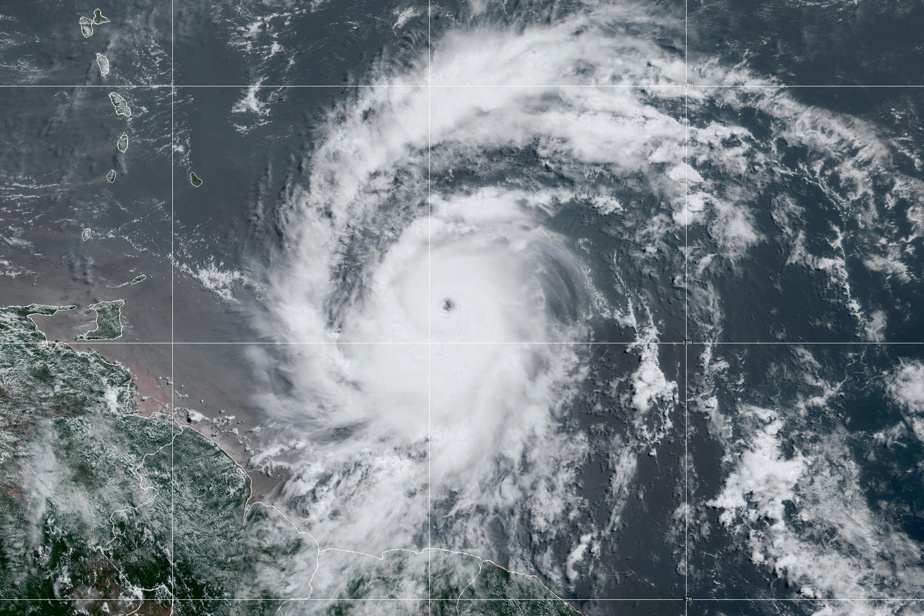(Bridgetown) The Hurricane Beryl strengthened further on Sunday and is moving towards the Caribbean with “extremely dangerous” winds exceeding 200 km/h, carrying “potentially fatal” risks for the islands of the Antilles.
Berylwhich had gone from tropical storm to hurricane overnight, is now classified as category 4, announced the National Hurricane Center (NHC) in Miami (United States), which is the reference.
The hurricane, which was then 565 kilometers from Barbados, continued to gain strength before hitting the first Windward Islands on Monday morning, the NHC added.
A weather event of this scale is extremely rare this early in the hurricane season – which runs from early June to late November in the United States.
“Only five major hurricanes [force 3 ou plus] were recorded in the years before the first week of July. If Beryl “If it actually becomes a major hurricane, it will be the sixth, and the earliest, ever recorded so far east,” hurricane expert Michael Lowry told X.
Stores stormed
A hurricane watch is in effect for the islands of Barbados, Saint Lucia, Saint Vincent and the Grenadines and Grenada.
On Saturday, Martinique, Dominica and the island of Tobago were placed on tropical storm watch.
In Barbados, gas stations were stormed by motorists stocking up on petrol before the storm hit.

PHOTO RAMON ESPINOSA, ASSOCIATED PRESS
Residents cover windows of their homes in preparation for hurricane Beryl in Bridgetown, Barbados.
Supermarkets and small grocery stores were filled with shoppers stocking up on water, food and other essentials, while residents everywhere were seen nailing boards to their windows to protect them.
“Hurricane conditions, with damaging winds, heavy rain, flooding and water levels rising to two meters above normal are expected from the early hours of Monday morning in the Leeward Islands,” warned the NHC.
The National Oceanic and Atmospheric Administration (NOAA) has forecast an extraordinary season for the end of May, predicting the possibility of four to seven Category 3 or higher hurricanes.
The 2024 hurricane season is also announced by Météo France as one of the “most intense” in this area.
These forecasts are particularly linked to the expected development of the La Nina weather phenomenon in the near future, as well as to the very high temperatures in the Atlantic Ocean, NOAA said.
Global warming is making extreme weather events, like hurricanes, more frequent and more devastating.
